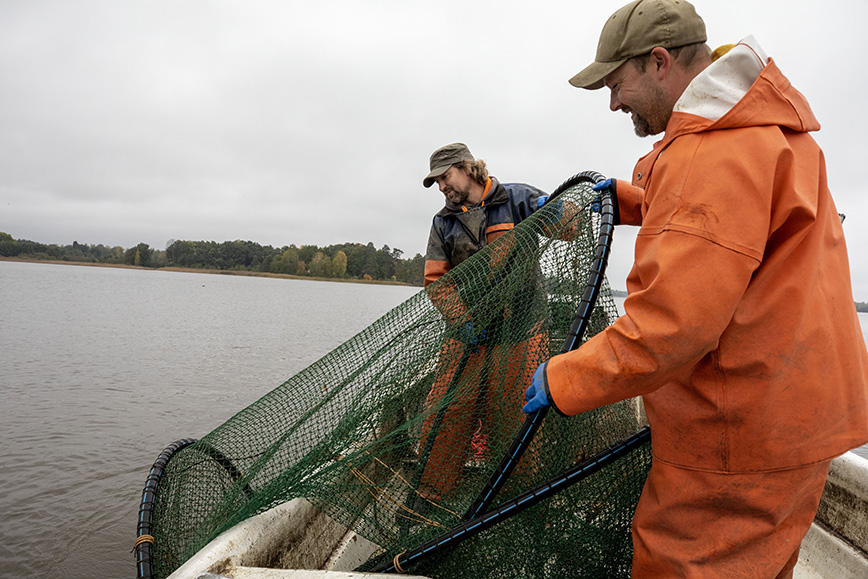“The sea is the key to a sustainable future”
– Centre for Sustainable Seafood receives a 48 million Swedish crowns (€4.7 million) grant

Of the 240,000 tons of fish that are caught in Sweden annually, only 40 percent goes to food consumption. At the same time, Sweden imports three quarters of the fish and shellfish we eat. Blue Food, a new research centre coordinated by KTH, aims to eliminate this imbalance.

“This is a huge investment, for which we have been granted SEK 48 million from Formas for the first four years. If the Centre proves a success, we have the option of a further SEK 48 million for the following four-year period,” says Fredrik Gröndahl, Associate Professor in Water and Environmental Engineering at KTH, the coordinator of the Blue Food Centre for the Seafood of the Future.
Sweden aims to become world-leading within sustainable seafood
Establishing the competence centre – where KTH is working closely with the University of Gothenburg, Chalmers, the Swedish University of Agricultural Sciences (SLU), Uppsala University, the Research Institute of Sweden (Rise), the Swedish Environmental Research Institute (IVL) and Innovatum ,plus some seventy companies and organisations –aims to make Sweden world-leading within the sustainable production of fish and shellfish. But it is not about becoming world-leading in terms of volume, Gröndahl explains.
“We want Sweden to be world-leading in sustainability in this context. We need to be able to guarantee that the seafood we produce in Sweden is very sustainable when it comes to production and from the industrial processing to the finished product. It is a matter of ensuring that the production and processing chain has the least possible climate impact and does not contribute to Eutrophication, and maybe even will help our seas feel a bit better,” he says.
Make use of food from fish more efficient
The initiative concerns two things above all. Firstly, that the food sourced from the fishing industry is used more efficiently. Approximately 240,000 tons of fish are caught in Sweden each year. But only around 40 percent is used for food consumption. The rest is used as feed at mink farms, for example, and for the production of biogas, Gröndahl explains.
“This is an incredibly poor use of such a valuable resource. We are going to ensure that we make far better use of the highly nutritious side streams from fishing.”
He also claims that there are many underutilised species, such as carp bream and other fish, that we neither use nor eat, but that make for excellent eating.
“To change this, we are going to work with chefs to develop delicious new recipes and create new food products,” says Gröndahl.
Cultivation of algae, mussels and fish
The second part of the initiative concerns aquaculture.
“This is something that is becoming very big today. I myself work with the cultivation of algae, that are a very important part of this project. Growing algae and mussels will play a big role here,” says Gröndahl.
They are also going to invest in more sustainable fish farming. However, unlike Norway for example, the fish will be cultivated on land.
“Cultivating fish in floating pens in the sea as they do in Norway, is not something we can do in Sweden. It would cause too many emissions. So, ours will be land-based. And this will also involve a great deal of technology, in the form of management systems and digitalisation systems to measure the water quality and other things,” says Gröndahl.
This initiative is also about making Sweden more self-sufficient when it comes to fish and shellfish – and therefore less vulnerable. The Blue Food Project is also a good example of cooperation within the marine sector in Sweden and shows how an entire industry that has long been in the shadows in food Sweden, is now starting to mobilise.
“The sea is the key to a sustainable future,” says Gröndahl.
Håkan Soold
